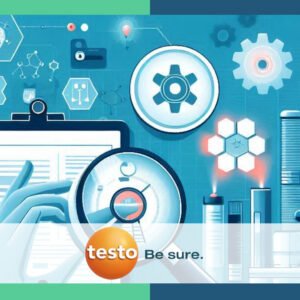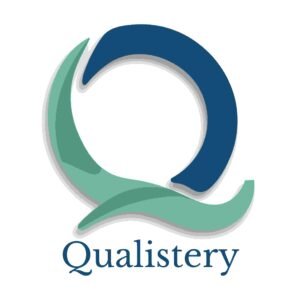Counterfeiting of pharmaceutical products poses a significant threat to public health and safety worldwide. To combat this growing menace, the pharmaceutical industry has been relentlessly implementing advanced security measures. This article provides a comprehensive overview of the range of security measures employed to combat counterfeiting. We will explore the various safety processes, protocols, and technologies used in pharmaceutical packaging and drug production.
1. The Rising Threat of Counterfeiting in the Pharmaceutical Industry
Counterfeit drugs have become a global issue with severe consequences for public health and safety. The World Health Organization estimates that around 10% of medicines worldwide are counterfeit, posing serious risks to patients who unknowingly consume these fake products. These counterfeit drugs often lack the necessary active ingredients or contain harmful substances, leading to treatment failures or adverse reactions.
Beyond the impact on patient health, counterfeiting also has significant economic implications for pharmaceutical companies and the global economy. According to estimates by the International Chamber of Commerce (ICC), counterfeit pharmaceuticals cost legitimate manufacturers billions of dollars annually. Additionally, governments face rising healthcare costs due to increased medical complications caused by fake drugs.
To address these concerns, robust security measures are essential throughout the pharmaceutical supply chain – from manufacturing and packaging to distribution and dispensing.
2. Regulatory Frameworks and Standards
Recognizing the seriousness of counterfeiting in the pharmaceutical industry, regulatory bodies across the globe have established standards and guidelines to ensure patient safety. International organizations such as the World Health Organization (WHO), European Medicines Agency (EMA), Food and Drug Administration (FDA), and others have implemented regulations requiring appropriate packaging security features.
These regulatory frameworks focus on areas such as tamper-evident packaging, unique identifiers, serialization, track-and-trace systems, product authentication technologies, and supply chain integrity. Compliance with these standards is crucial for pharmaceutical companies to ensure the safety and efficacy of their products.
3. Physical Security Measures in Packaging
Tamper-evident packaging is a key component of pharmaceutical security. It allows for the detection of unauthorized access to a package, ensuring its integrity throughout the distribution process. Tamper-evident features include seals, shrink bands, breakable caps, and blister packs that make it evident if a product has been tampered with or opened.
Innovative labeling techniques are also employed to prevent label removal and reapplication. These techniques involve using adhesive labels that tear upon removal or leave behind residue when tampered with.
Another important aspect of physical security measures is the use of packaging materials with unique identifiers and authentication features. This includes technologies such as holograms, colour-shifting inks, embossing, and security printing techniques that make counterfeiting more challenging.
4. Serialization and Track-and-Trace Technologies
Serialization refers to the unique identification of individual drug units or product batches through the assignment of unique serial numbers or codes. These serial numbers are captured throughout the supply chain using track-and-trace systems, enabling end-to-end visibility and traceability.
Track-and-trace technologies provide real-time monitoring of pharmaceutical products from production all the way to end-users. These systems utilize barcode scanners, RFID (Radio-Frequency Identification) tags, or other digital identifiers to capture data at various points in the supply chain. This allows for better control over product movement and enables quick identification of counterfeit or diverted goods.
Implementing serialization and track-and-trace technologies can significantly enhance supply chain transparency, reduce counterfeiting incidents, and ensure patient safety by enabling rapid recall management in case of product quality issues.
5. Authentication Technologies
Authentication technologies play a vital role in verifying the genuineness of pharmaceutical products at various stages – from manufacturing to dispensing. Barcodes, QR codes, and Data Matrix codes are widely used for product verification and authentication. These codes can be scanned using smartphones or dedicated scanners to retrieve product information and verify its authenticity.
Holograms, colour-shifting inks, and security printing techniques are also employed as additional layers of security. These features are difficult to replicate and act as visual indicators of a genuine pharmaceutical product.
RFID technology is another authentication method gaining prominence in the pharmaceutical industry. RFID tags embedded in packaging materials or labels enable real-time tracking and authentication of products across the supply chain. This technology allows for quick identification of counterfeit goods and helps prevent unauthorized distribution.
6. Smart Packaging Solutions
Smart packaging refers to the integration of advanced technologies into pharmaceutical packaging to enhance safety, quality, and patient experience. Sensor-based technologies are used to monitor temperature, humidity, light exposure, and other environmental factors that may impact product stability. These sensors help ensure that medications are stored under appropriate conditions throughout their lifecycle.
Near Field Communication (NFC) technology is utilized in combination with mobile apps to facilitate easy verification of product authenticity by consumers. By tapping their smartphones on NFC-enabled packaging, patients can access important information about the medication they are consuming and check if it is genuine.
Smart packaging solutions not only aid in combating counterfeiting but also offer opportunities for improved patient engagement and medication adherence through interactive features like reminders, dosage instructions, and refill alerts.
7. Anti-Counterfeiting Technologies in Drug Production
Beyond packaging security measures, anti-counterfeiting technologies are also integrated into the drug production process itself. Advanced manufacturing techniques such as 3D printing allow for intricate designs that make it difficult to replicate drugs accurately. The complexity introduced by 3D-printed components significantly reduces counterfeiting risks.
Microscopic tags and markers are incorporated during drug formulation or production processes to enable in-process authentication and traceability. These microscopic features can be detected using specialized equipment at various stages of manufacturing or during inspections at customs checkpoints. The presence of these markers confirms the authenticity and origin of the drug.
Integration of security features during drug formulation and production ensures that counterfeiters face significant challenges when attempting to replicate pharmaceutical products.
8. Supply Chain Security and Collaboration
Ensuring supply chain security involves collaboration among all stakeholders, including pharmaceutical manufacturers, packaging suppliers, distributors, pharmacists, healthcare providers, and regulatory agencies. It requires implementing secure logistics and distribution practices to minimize the risk of counterfeiting at each stage.
Stakeholders in the pharmaceutical supply chain need to undergo training programs and awareness campaigns to detect counterfeit products effectively. These programs heighten their understanding of security features, enable them to identify suspicious packaging or labelling inconsistencies and equip them with reporting mechanisms to alert authorities about potential counterfeits.
Collaboration between governments, law enforcement agencies, industry associations, and technology providers is crucial in developing effective strategies against counterfeiting. Sharing best practices, intelligence on emerging threats, and implementing joint initiatives can help create a robust defence against counterfeit drugs.
9. Future Trends and Emerging Technologies
The fight against counterfeiting in the pharmaceutical industry continuously evolves as new technologies emerge. Artificial Intelligence (AI) and Machine Learning (ML) algorithms are being developed to analyze large volumes of data and identify patterns that indicate counterfeit activities. AI-powered systems can swiftly identify anomalies in supply chain data or product characteristics that may signal the presence of fake drugs.
Blockchain technology holds great promise for enhancing traceability and transparency throughout the pharmaceutical supply chain. By recording transactional data in an immutable distributed ledger, it becomes nearly impossible to tamper with or alter information related to drug manufacturing, distribution, or authentication events.
Nanotechnology is another emerging field offering microscopic identification tags for enhanced authentication. These molecular tags can be incorporated into packaging materials or directly onto dosage forms themselves without affecting their stability or efficacy. Their small size makes them difficult to replicate accurately by counterfeiters.
As technology advances, the pharmaceutical industry will continue to explore new ways to combat counterfeiting and ensure patient safety.
Conclusion
The pharmaceutical industry faces a continuous battle against counterfeit drugs, necessitating the adoption of robust security measures. By exploring the range of security technologies used in packaging and drug production, we can gain a comprehensive understanding of the strategies employed to combat counterfeiting. Through the implementation of stringent safety processes, protocols, and advanced technologies, we can safeguard the integrity of the pharmaceutical supply chain and protect the health and well-being of patients worldwide.
Qualistery provides life‑science professionals with concise, practical GxP and cGMP learning through expert‑led webinars and tailored training, helping teams make safer, more compliant decisions. We deliver these sessions in partnership with trusted solution providers, combining real‑world insights and actionable guidance with targeted outreach to the right decision‑makers.







